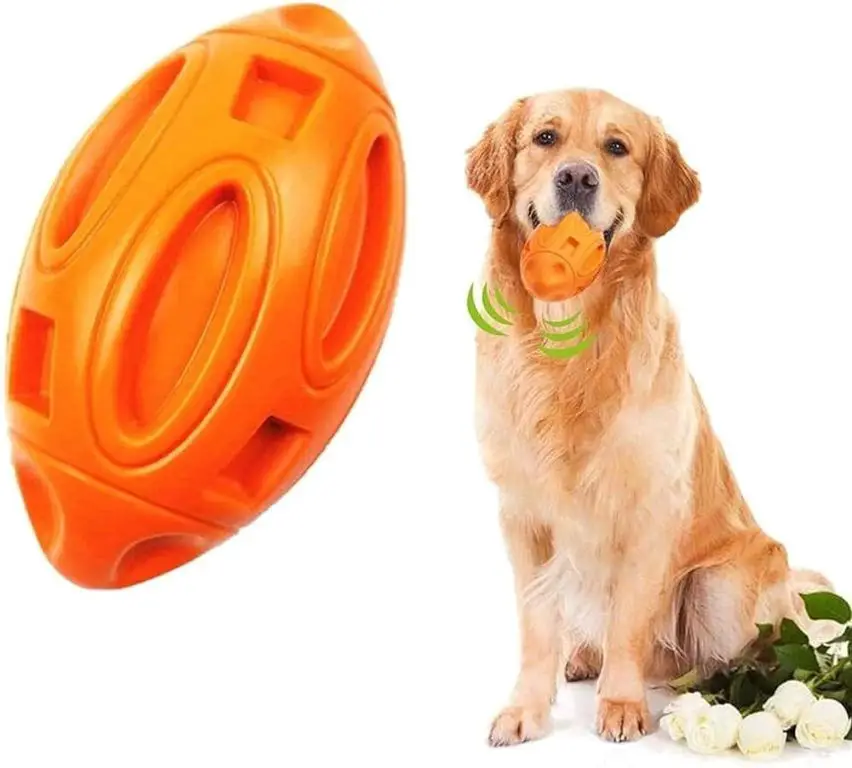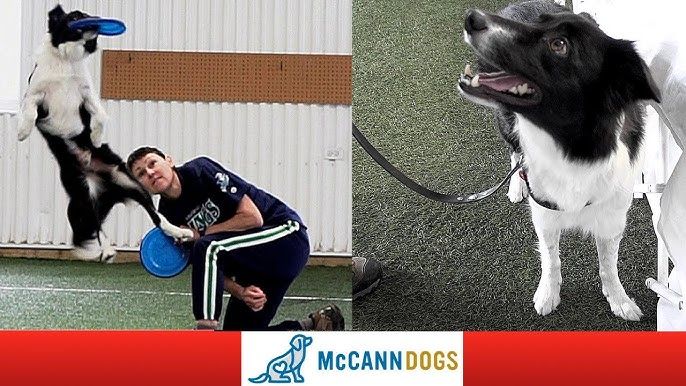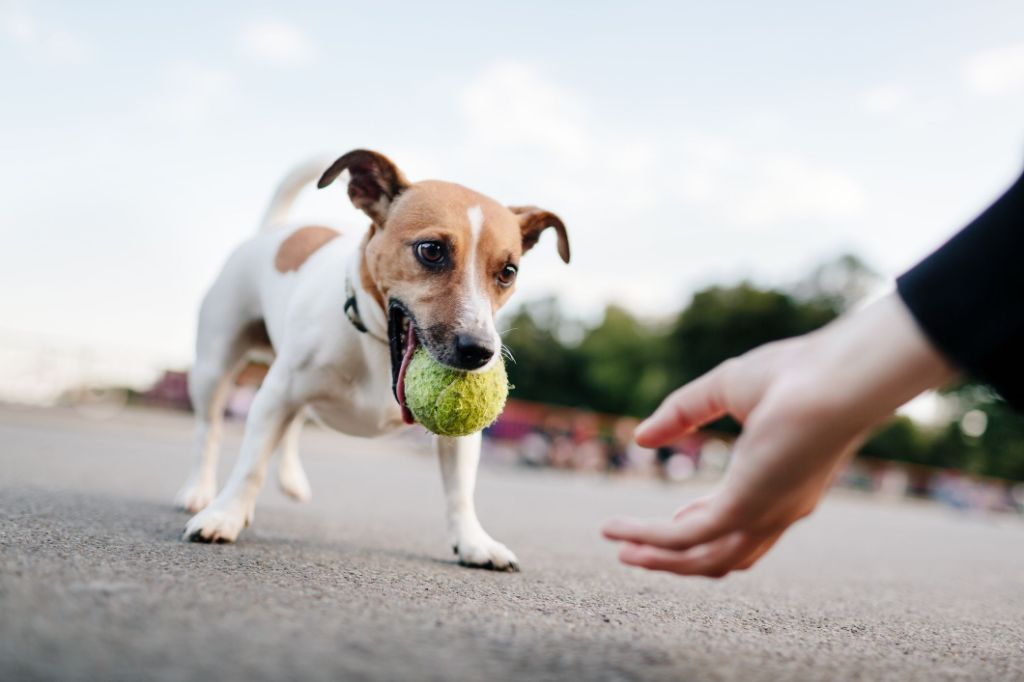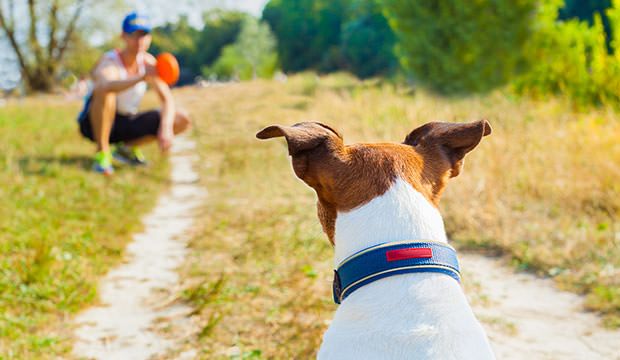Introduction
Fetch is a fun game where you throw an object and your dog runs after it, picks it up in their mouth, and brings it back to you. Dogs love playing fetch because it allows them to satisfy their natural instinct to chase, capture, and retrieve.
Most dogs get very excited when their owners pick up a ball or favorite fetch toy because they know it means playtime. Chasing and capturing a moving object triggers your dog’s prey drive, providing them with mental stimulation. Retrieving the object back gives them a sense of purpose and reward through positive interaction with their owner.
Fetch is great exercise and bonding time for you and your pup. It’s an interactive game that provides physical activity along with the mental challenge of running after a moving target. Dogs love fetch because it’s an outlet for their energy and provides the satisfaction of completing a task and making their owner happy.
Get a Fetchable Item
When playing fetch with your dog in Breath of the Wild, having the right fetchable item is key. Some of the best options to try include:

Sticks – Sticks can make great natural fetch toys. Look for sticks that are relatively straight, lightweight, and not too long or sharp. Avoid sticks from trees high in sap or toxic woods like oak or cherry.
Balls – Tennis balls, rubber balls, and squeaky balls are fetch favorites. Make sure the ball is sized appropriately for your dog. Balls that are too small can be a choking hazard.
Frisbees – Frisbees and other flying discs designed specifically for dogs can add fun variation to fetch. Go for lightweight plastic designs in bright colors.
Initiate the Game
The key to initiating a good game of fetch is capturing your dog’s attention and building their excitement about the toy. Start by getting your dog’s focus on you – say their name, make eye contact, and give them a command like “sit” or “stay”. Once you have their attention, show them the toy and wave it enticingly. You can squeak the toy or roll it on the ground to pique your dog’s interest. Use an enthusiastic, happy tone and body language to get your dog revved up. The goal is to make your dog super excited about chasing after that toy!
Here are some tips for initiating an engaging game of fetch from the AKC article “How to Teach Your Dog to Fetch”:
“Before you throw the object, wave it in front of your dog and see if you can stimulate the prey drive. Make squeaky noises with the toy. Quickly roll balls along the ground. Get your dog excited about chasing the object.” (https://www.akc.org/expert-advice/training/teach-your-dog-to-fetch/)
Throw the Item
When playing fetch with your dog, it’s important to use proper throwing technique and throw the item an appropriate distance for your dog’s abilities. Start by holding the item, such as a ball or toy, in your dominant throwing hand. Bring your arm back behind your body and use your shoulder and core muscles to generate power as you swing your arm forward and release the item.

For distance, a good starting point is 10-20 feet away from your dog. This is close enough that they can see where the item lands but far enough to make them run a bit. Gauge your dog’s reaction and adjust the distance accordingly – enthusiastic dogs ready for a challenge can handle longer throws of 30+ feet. Start shorter for less mobile or smaller dogs. Avoid throwing too far to prevent frustration. The ideal distance challenges your dog without overexerting them.
Aim for a flat, low trajectory when releasing the item. High arcing throws can make it hard for your dog to track the item. Low, direct throws let your dog watch the item’s path. Throwing sidearm can give you more control over distance and trajectory. Follow through fully on your throw to get maximum carry.
Also pay attention to aiming the throw away from hazards and obstructions. Throwing into bushes, water or uneven terrain risks losing the item and ending the game early. Try to find an open, flat space for fetch. Remember to throw with care and avoid hitting your dog accidentally on the return.
Let Your Dog Retrieve It
After you throw the item, allow your dog to run after it and pick it up in their mouth. Be patient and resist the urge to immediately take the item from your dog’s mouth once they return to you. It’s important that you allow your dog to hold the item for a moment before asking them to release it. This allows them to feel that sense of possession and accomplishment from obtaining the toy.
Let your dog carry the toy or object back to you at their own pace. Don’t call them back or try to speed them up. Allowing your dog to bring the item back teaches them that part of the game is returning to you. Rushing the process can confuse your dog.
Praise your dog enthusiastically with “Good fetch!” or “Good dog!” when they pick up the item. Your positive reaction will help reinforce that this is the behavior you want. Just be sure not to try taking the item from their mouth yet. Simply let them carry it and allow them to hold onto it for a few moments first.
It may take some practice and patience for your dog to learn to pick up the item and bring it all the way back consistently. But with encouragements and rewards, they’ll learn that part of the fun is running to get the toy and proudly carrying it in their mouths.
Dog Returns with Item
This is a crucial step in teaching fetch. When your dog returns to you with the item, praise them enthusiastically and give them a high-value treat right away. You want to reinforce that returning the item to you leads to great things for your dog. Say “good boy/girl!” and give pets or play as a reward too. The instant your dog releases the item to you, praise and treat. If they drop the item before reaching you, don’t reward. Encourage them to pick it up and bring it fully back each time. Be patient as your dog learns this part.

Some tips for praising and rewarding the return:
- Have treats ready in your hand to reward immediately.
- Use an excited tone and enthusiasm when praising.
- Give the treat right as they release the item into your hand.
- Vary the rewards with play and pets too.
- Only reward if they bring the item fully back to you.
With consistency, your dog will make the connection that returning the fetched item to you results in praise, treats, and play. This will motivate them to complete the fetch each time. Be patient, consistent, and generous with praise and rewards in these beginning stages.
Throw Again
Once your dog has successfully retrieved the item, it’s time to throw it again to keep the game of fetch going. The main steps here are to take the item from your dog’s mouth, praise them for bringing it back, then throw the item again.
Repeat the process of throwing the item and having your dog fetch it back to you multiple times. This repetition helps reinforce the training. Just make sure to continue praising your dog each time they successfully return the item.
It’s also a good idea to mix up how and where you throw the item. Toss it farther away, gently lob it through the air, bounce it along the ground – changing it up will keep your dog engaged. You can also move to different locations for more variety. This challenges your dog and prevents them from anticipating exactly where the item will go each time. For example, try starting indoors, then heading outside to the yard, then going to a park.
No matter where you are, keep the game fun by continuing to throw the item and encouraging your dog’s efforts. With repetition, they will soon become an experienced fetcher!
Ending the Game
It’s important to provide cues that the fetch game is ending so your dog knows playtime is over. Some dogs can get very excited and focused during games of fetch. Abruptly ending the game can cause frustration. Instead, provide clear signals.
One method is to stop throwing the item as far. Do a couple short, gentle tosses as the last throws. You can also say “last one” or “all done” before the final throw. When your dog returns with the item the last time, take it and then provide praise and pets. Say “good job” and “all done” to indicate playtime is over.
Next, put all fetch toys securely out of sight and reach, like in a closet or container. This prevents your dog from bringing you the item continually to try and restart the game. With toys put away, you can then attach your dog’s leash and direct them into another activity, like a walk.
Always end on a positive note with affection so your dog associates the end of fetch time as a good thing.
Try Other Locations
In addition to playing fetch at home or in your backyard, consider taking your game to other locations that provide fun variety for you and your dog. Here are some options to try:

Local parks are a great place to play fetch, especially those with large open fields. Make sure your dog is good at recall before playing off-leash at a park. You can also find enclosed dog parks and designated off-leash hours at certain city and state parks.[1]
Beaches can provide plenty of space to really stretch out those fetch throws. Make sure your dog is trained to come when called so they don’t go chasing birds or other wildlife. Pay attention to designated off-leash areas.
When it snows, head to a large open space and play fetch with brightly colored toys that stand out against the white background. Snow provides a soft landing for longer airborne catches.
Varying locations keeps the game interesting and exciting for both you and your dog. Make sure to follow leash laws and stay aware of your surroundings when playing fetch in public areas.
Further Fetch Tips
If your dog is having trouble learning to fetch or loses interest in fetching, try some of these tips:
- Use high-value treats like small pieces of chicken or cheese to reward your dog for completing each step of fetching. The reward will keep them engaged and motivated.
- Throw very short distances at first, even just a foot or two, to make it easy for your dog to succeed. Gradually increase the distance as they improve.
- Run away from your dog after throwing the toy to trigger their natural chase instinct.
- Use exciting squeaky toys and balls that your dog loves. Rotate through a variety of fetch toys to prevent boredom.
- Play fetch in new locations to add novelty and excitement. Try playing fetch outside in a yard, at a park, or at dog-friendly hiking trails.
- If your dog gets distracted, gently guide their attention back to you and the toy. Limit outside distractions until your dog has mastered the basics.
Most importantly, keep fetch sessions positive and fun for you and your dog. Fetch is a great way to exercise your pup and strengthen your bond. With persistence and practice, you can teach any dog to happily play fetch.
